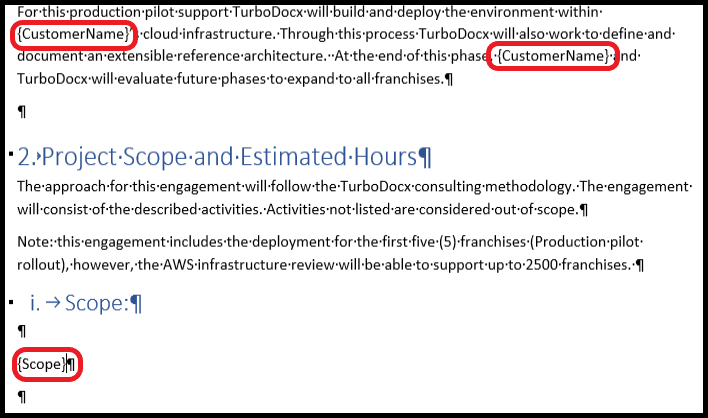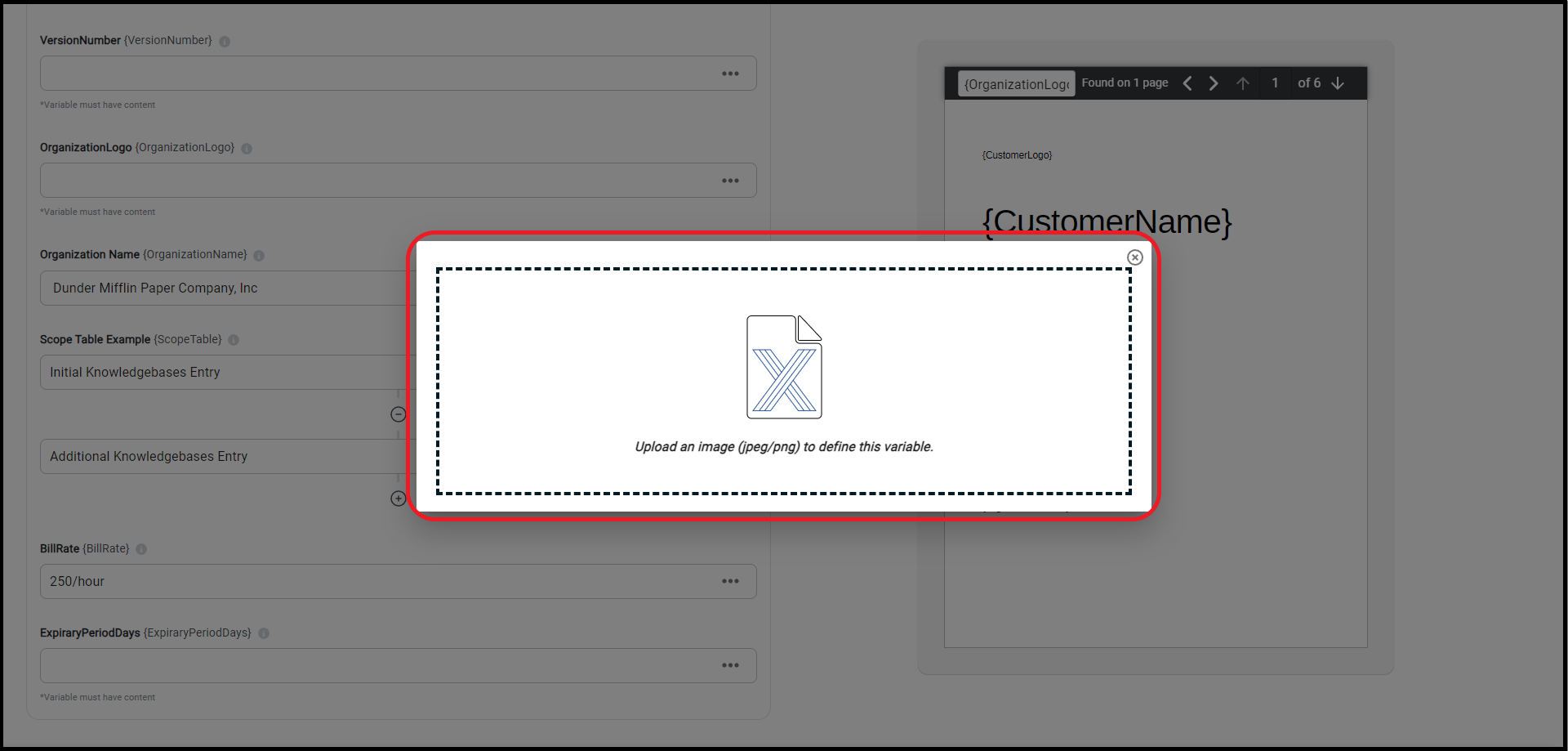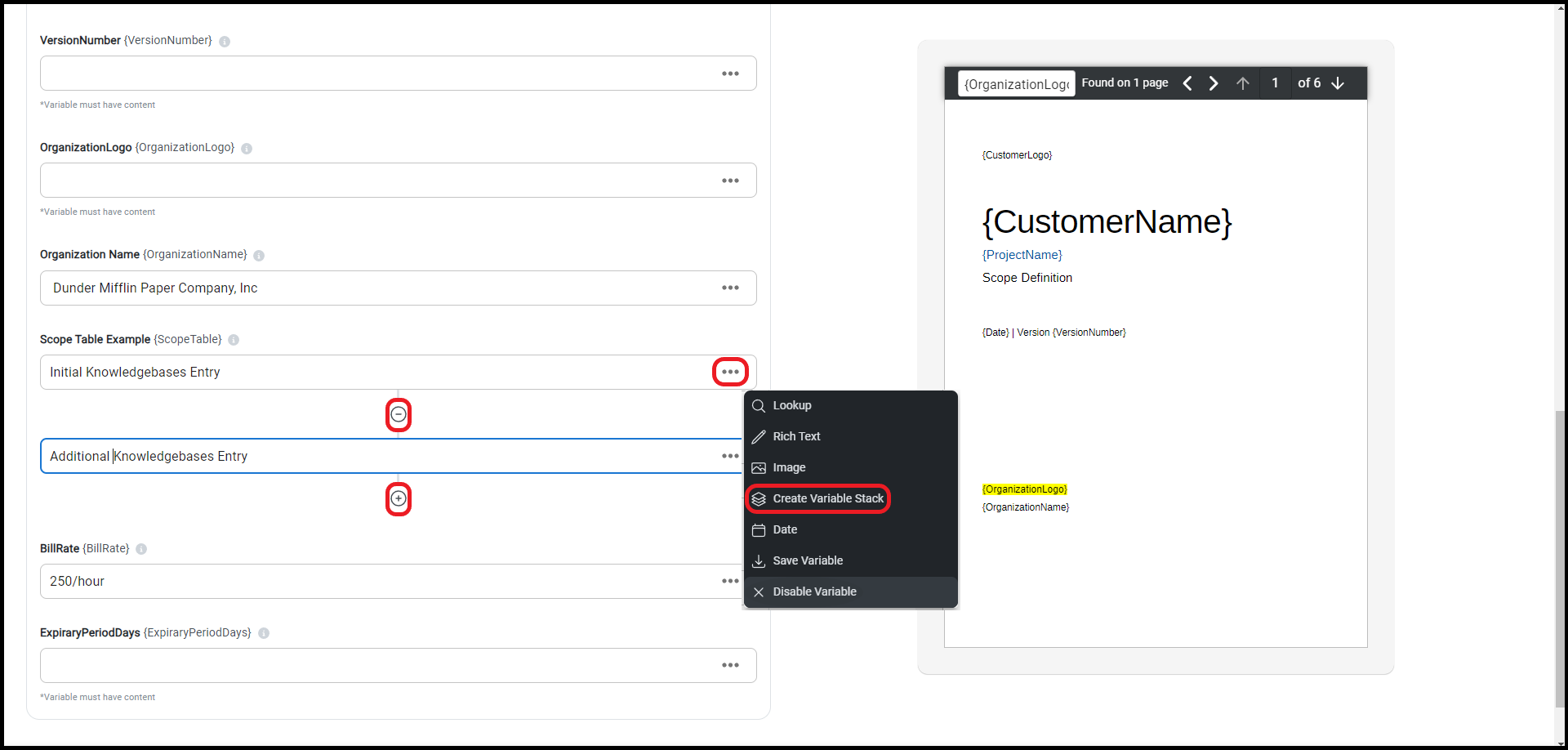Guides, Tips and Tricks
Here you will find additional standalone guides to features, uses and tips.
Variable Entries
There are multiple ways to enter and edit your variables. In this guide we will break down the different ways in three parts: Simple Text, Advanced, Variable Stack and Disable Variable.
Simple Text Entries
In this first example we will be using simple text entries. Things such as "CustomerName" or "ProjectName" already have formating in the template so just clicking on the box and typing your entry will be sufficient for us here.
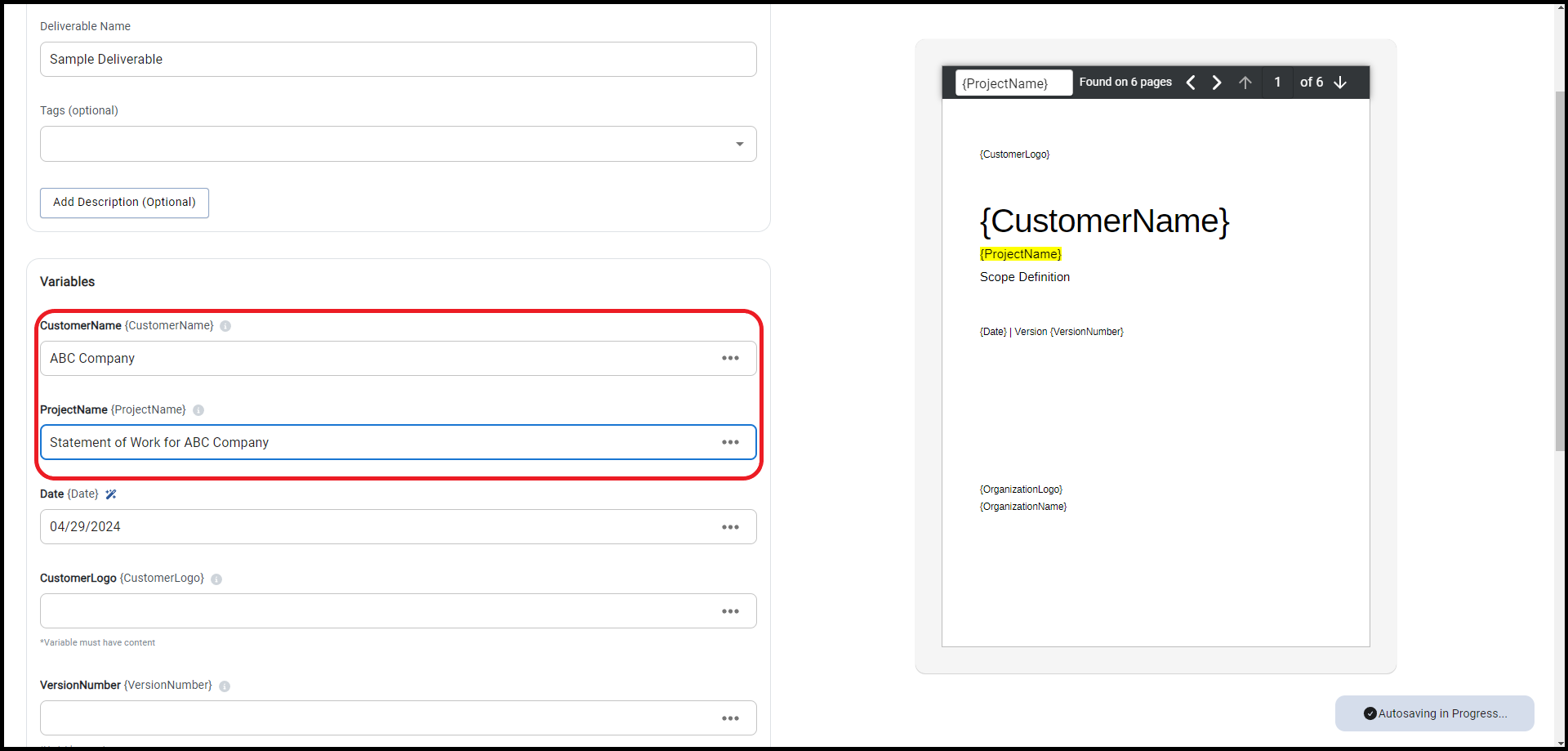
Advanced Entries
What happens if we need a more robust entry? Maybe we want something from our Knowledgebase entries, an image or just add some formatting to the text. We'll go through each option in this section.
First, what we will do is click the more options or the triple dot button located next to the variable boxes. Here you will see all the options we just discussed and more.
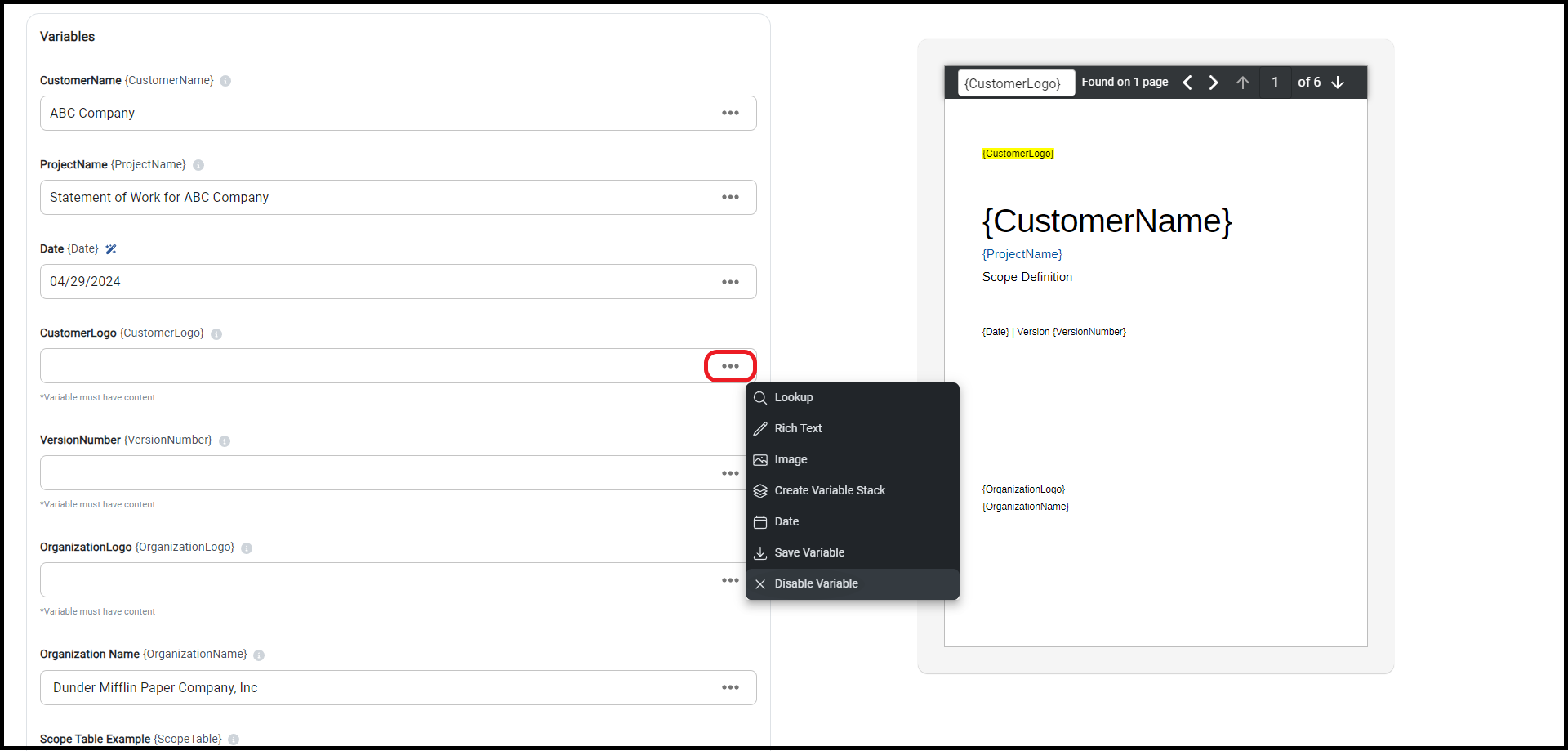
Next, please select the option you would like to utilize.
Lookup
To select something from your Knowledgebase, click Lookup.
A popup window will display all your entries. Scroll or search through them. The search feature will look for the keyword in the name, tags, or content. Larger entries have a preview option. Once found, click the blue "Select" button.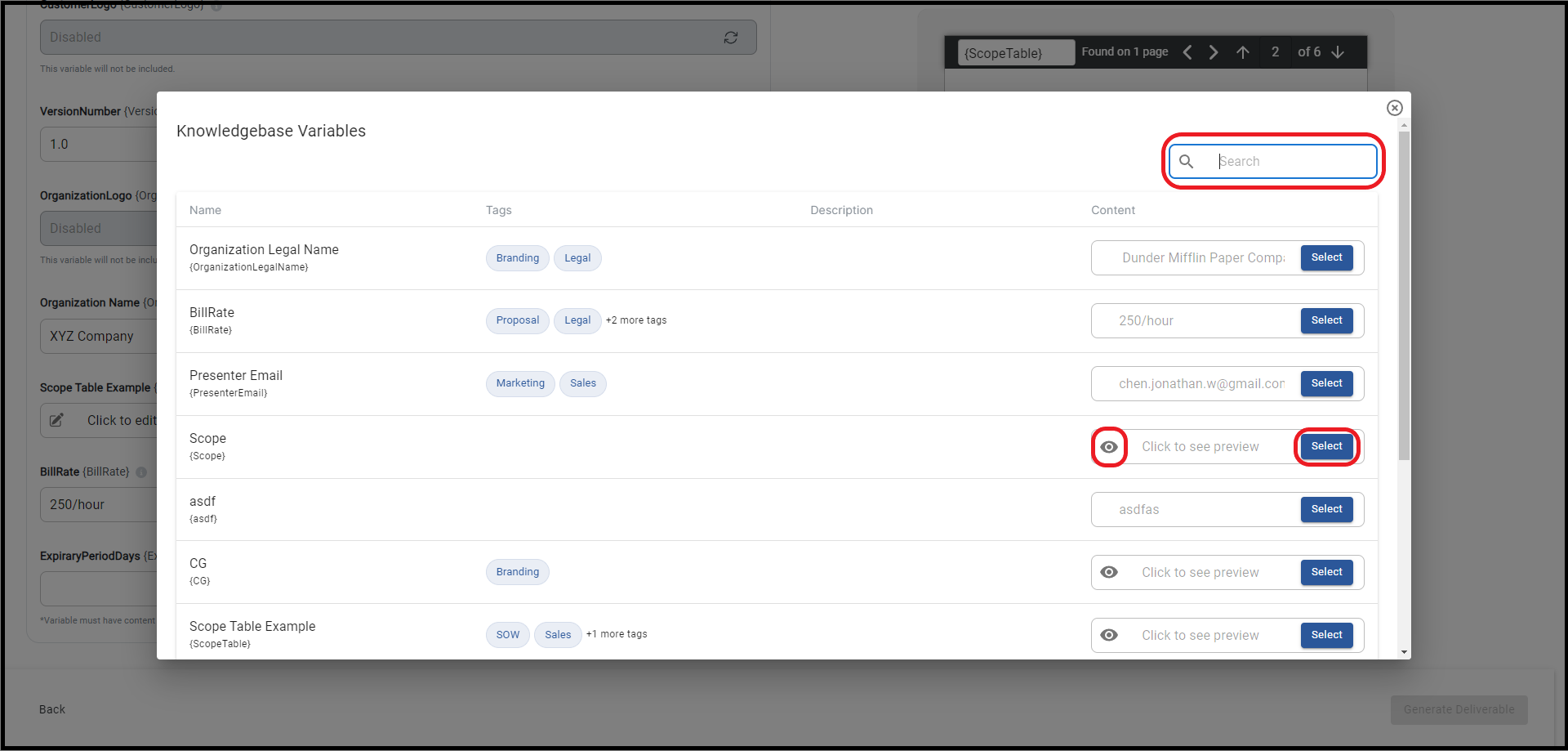
- This is where tags and descriptions when creating the Knowledgebase entry may come in handy.
- Even after selection, you can edit variables for any necessary changes from the Knowledgebase entry. Simply click the content box for simple text changes. For other variable types, use the pencil and paper icon to edit.
Image
For images, click Image.
A pop up will come up where you can click on it to open your file browser and choose an image.
Rich Text
For text that you need to format, or if you'd like to add a table you will click on Rich Text.
A new window will pop-up as shown in the image below. Here you will see familiar options such as text formats, colors as well as the ability to add tables among other things. Just click the "Save" button when you're done

Date
For a date, click on Date.
A calendar will pop-up above the variable which you can then use to select the date.
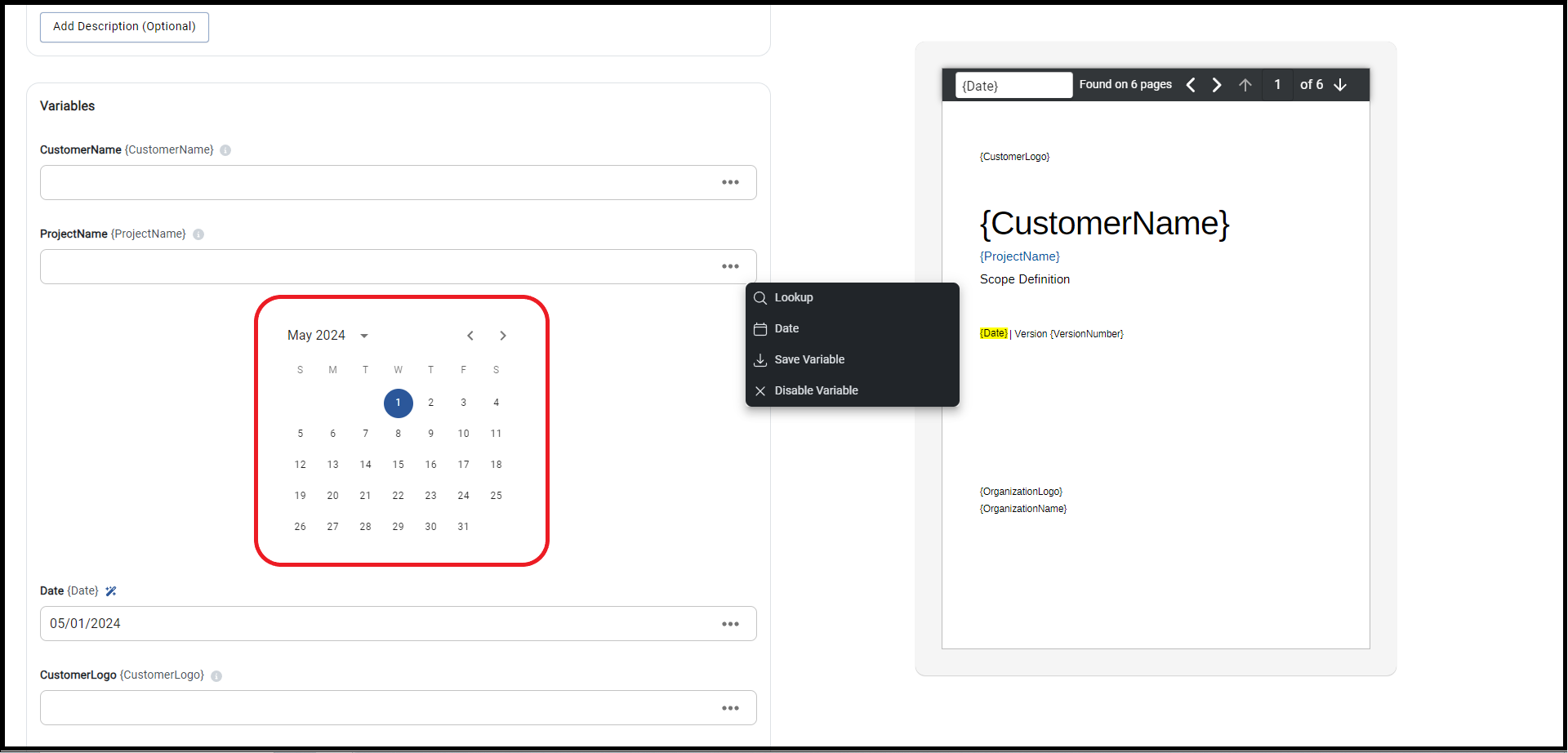
Variable Stack and Disable Variable
Sometimes you will need more than one entry for a given variable and others you will not need a certain variable at all. These two options will allow you to do that.
Variable Stack
If you need multiple variable entries or images for a section of your Deliverable, click Create Variable Stack under more options.
You'll return to the original page with a "+" button under the variable. Add stacks by clicking "+", to remove them click "-".
Disable Variable
Sometimes a variable is helpful to have in a template but may not be needed in every Deliverable. For instances where the variable is not needed you can click on more options and then Disable Variable.
This will remove the requirement to have content in that variable. To undo this just click the button that now replaced the more options button.

Subvariables
In your Knowledgebase you may have entries that you will want to have variables in. For example a entry outlining each parties responsibites with {CustomerName} or {OrganizationName} as variables. We call these Subvariables. Here we will go over how you can utilize them.
Adding Subvariables
- We will start by creating a new Knowledgebase entry (see How to Create a Knowledgebase Entry if you need a refresher), and we will be selecting "Rich Text" from our more options menu.
- Much like adding a variable in a Template you will fill out your entry utilizing {brackets} around the subvariable that you would like to create, in this example we will be using {CustomerName} in part of our chart.
- As you can see once the subvariable is created a seperate input box will appear on the left side under {CustomerName}. Whatever you input into this box will be placed in the subvariable!
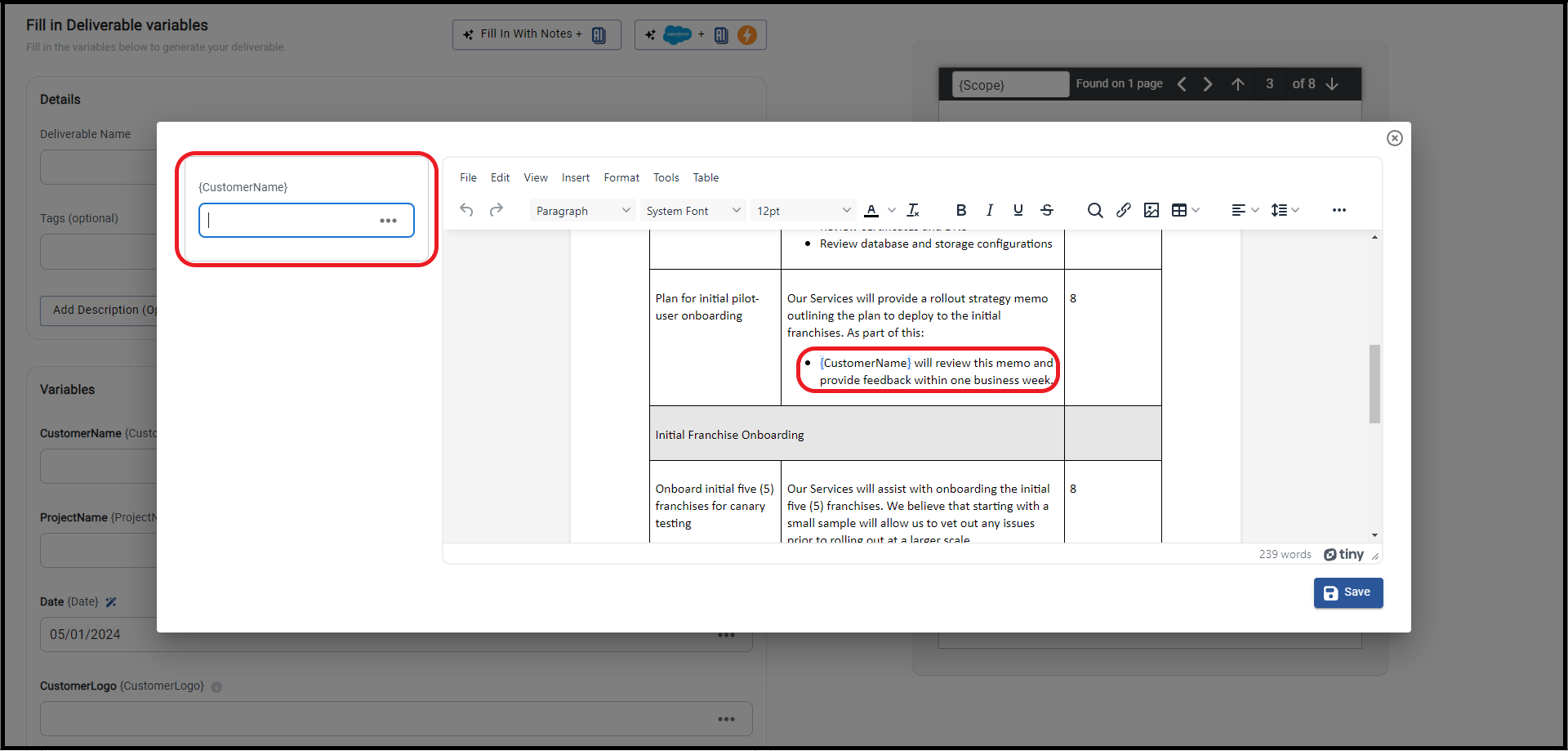
When you are a creating a deliverable and choose an entry with a subvariable click on the pencil and paper icon to see the same window in step 3 and enter your subvariable input.
AI Generation
Do you have notes on your CRM, or a website that can help you fill out some of the variables when creating a Deliverable?
Our Ai Generation will allow you to input data and find the information it needs to fill out variables in your Deliverable!
This guide will show you how.
Navigating to AI Generation
Select a Template and create a Deliverable (see How to Create a Deliverable if you need a refresher).
Click on the "Fill in With Notes + AI"
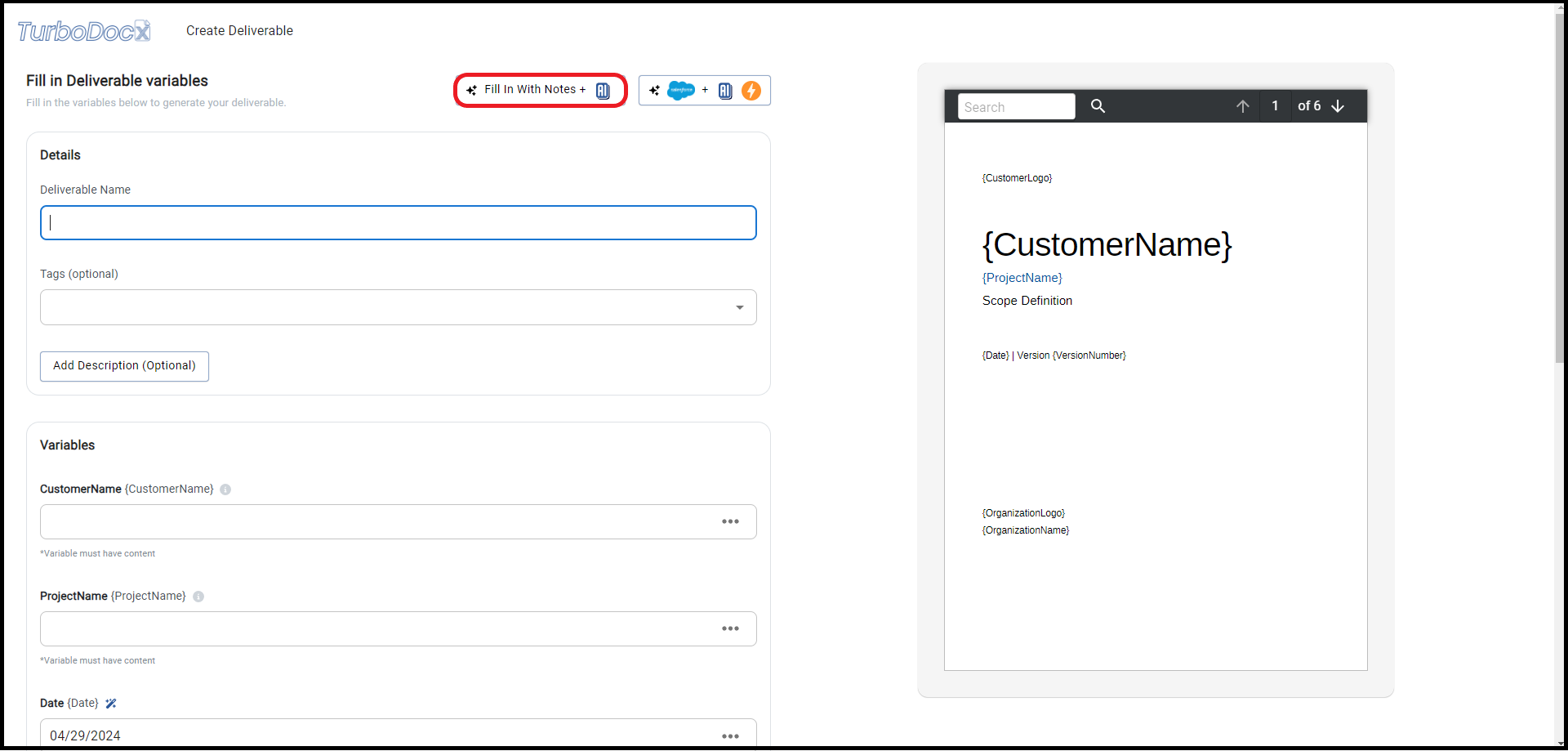
Utilizing the AI Generator
Landing Page
After you've navigated to the "Fill in With Notes + AI" page it should look like the image below. As you can see there are areas of input for Websites and other things on the left, an area to input notes you may have on the right (after you click on Advanced Settings) and your variables below.
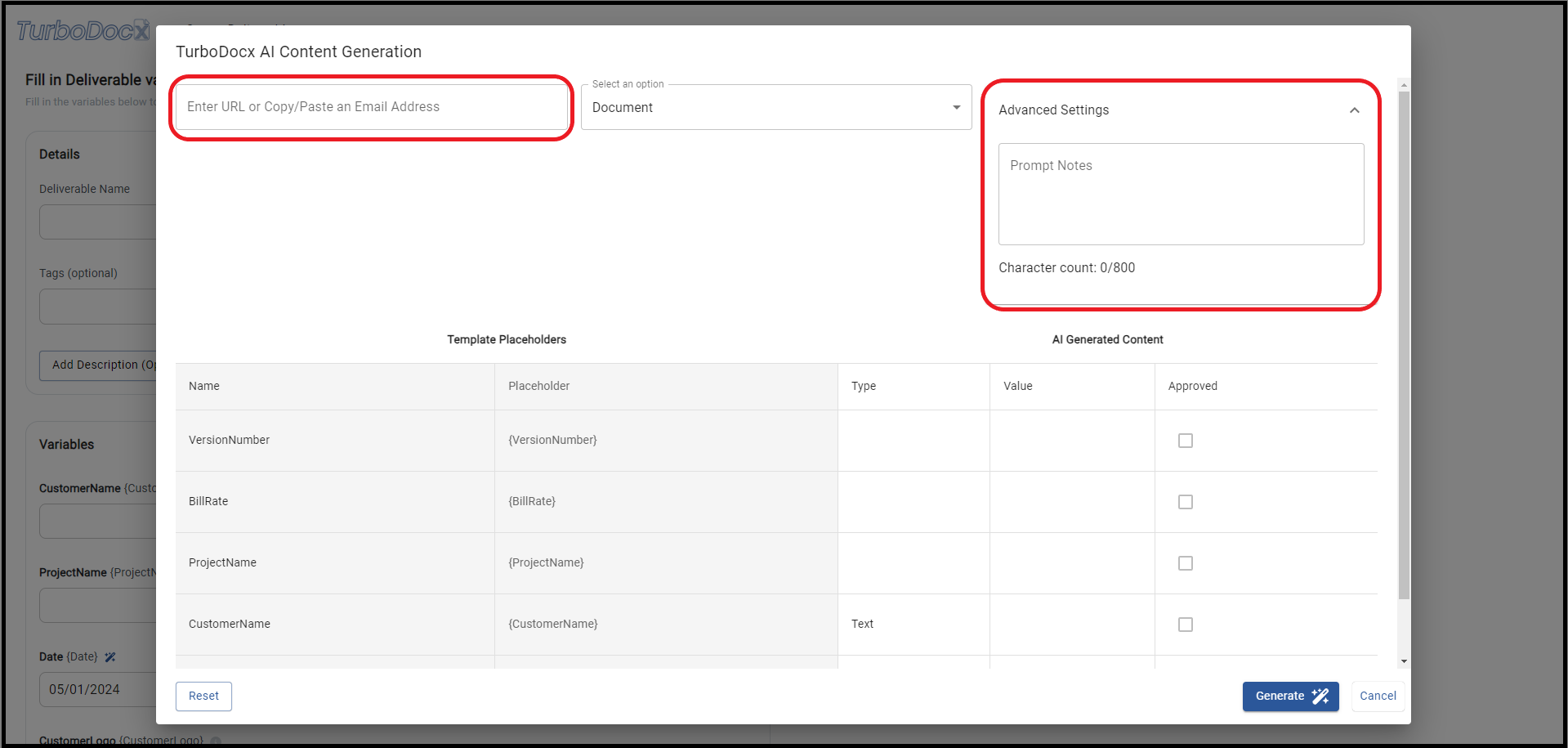
Input and Generate
- For this example we will be using the a fictional company's website and notes from our CRM.
Once we have added our content hit the "Generate" button.

- Our AI scans through notes and websites to identify anything matching your template variables. It populates this information in the "Value" column, which you can review and approve by checking the corresponding boxes on the right.
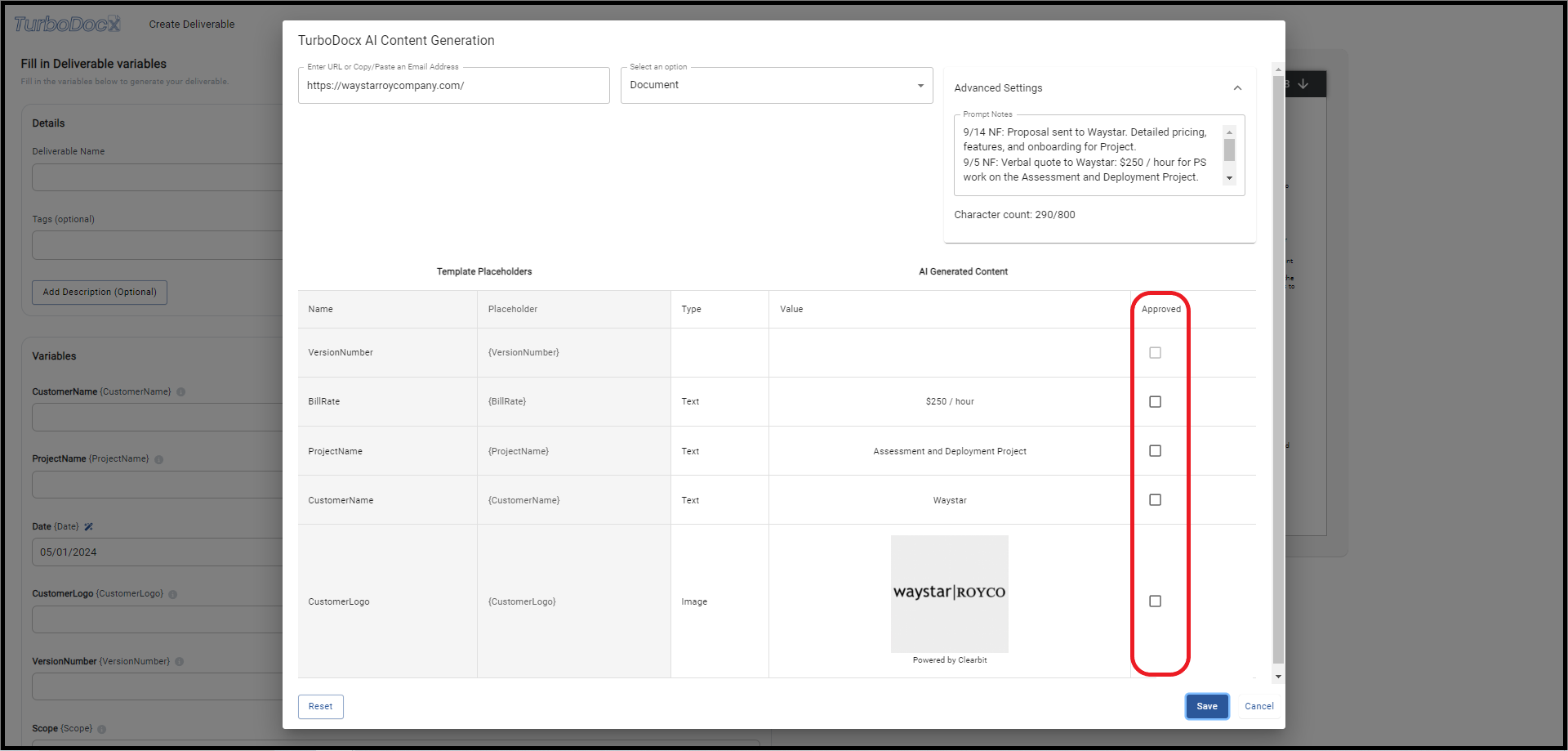
- Click the "Save" button and you will be brought back to the original "Create Deliverable" screen where you can continue to fill out your variables and create your Deliverable.
Variable Troubleshooting
Here are some best practices when troubleshooting why your variable is not showing up in the Template.
Video Tutorial
- All variables will need to be one word, so do not put any spaces in the middle of the {brackets}.
2. If the variable will be an image or rich text, make sure the variable is on it's own line. Use the show paragraph tool if you need help. The location for that tool in Word and Google Docs are in the image below.
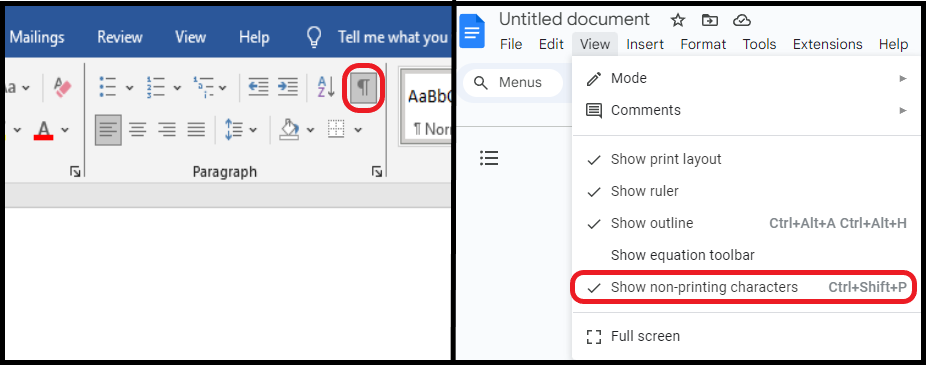
When you activate the tool, it will resemble the image below. Since {CustomerName} is plain text, it can be incorporated into a paragraph. However, we will be utilizing a chart in Rich Text for {Scope}, so it needs to be on its own line. Paragraph symbols will indicate this distinction clearly.
